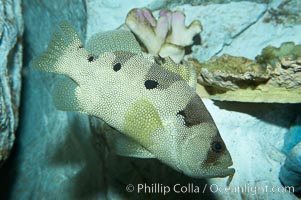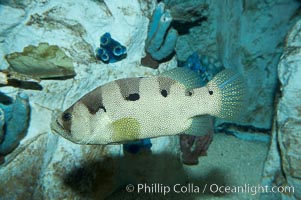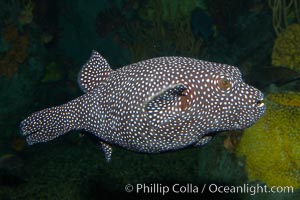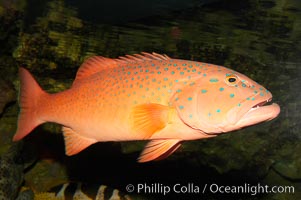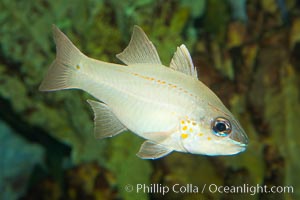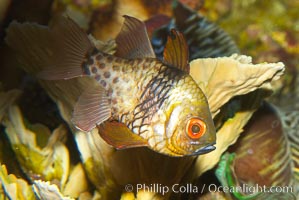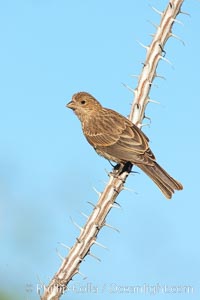
House finch, female.
Species: House finch, Carpodacus mexicanus
Location: Amado, Arizona
Image ID: 23057
Species: House finch, Carpodacus mexicanus
Location: Amado, Arizona
Image ID: 23057
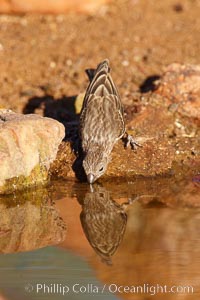
House finch, female.
Species: House finch, Carpodacus mexicanus
Location: Amado, Arizona
Image ID: 23058
Species: House finch, Carpodacus mexicanus
Location: Amado, Arizona
Image ID: 23058
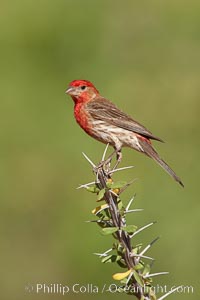
House finch, male.
Species: House finch, Carpodacus mexicanus
Location: Amado, Arizona
Image ID: 23061
Species: House finch, Carpodacus mexicanus
Location: Amado, Arizona
Image ID: 23061
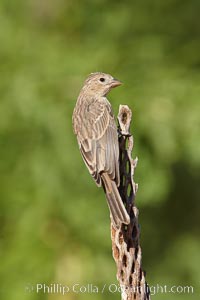
House finch, female.
Species: House finch, Carpodacus mexicanus
Location: Amado, Arizona
Image ID: 23062
Species: House finch, Carpodacus mexicanus
Location: Amado, Arizona
Image ID: 23062
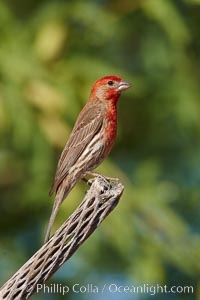
House finch, male.
Species: House finch, Carpodacus mexicanus
Location: Amado, Arizona
Image ID: 23065
Species: House finch, Carpodacus mexicanus
Location: Amado, Arizona
Image ID: 23065
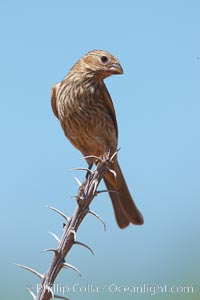
House finch, female.
Species: House finch, Carpodacus mexicanus
Location: Amado, Arizona
Image ID: 23066
Species: House finch, Carpodacus mexicanus
Location: Amado, Arizona
Image ID: 23066
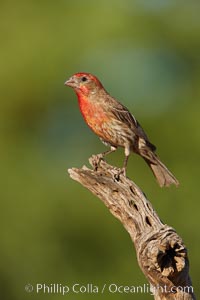
House finch, male.
Species: House finch, Carpodacus mexicanus
Location: Amado, Arizona
Image ID: 23068
Species: House finch, Carpodacus mexicanus
Location: Amado, Arizona
Image ID: 23068
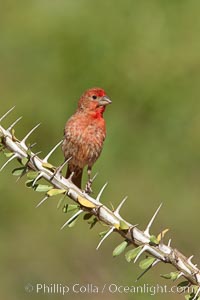
House finch, male.
Species: House finch, Carpodacus mexicanus
Location: Amado, Arizona
Image ID: 23085
Species: House finch, Carpodacus mexicanus
Location: Amado, Arizona
Image ID: 23085
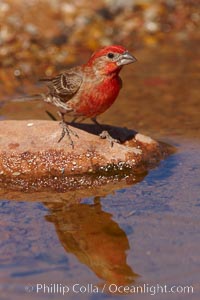
House finch, male.
Species: House finch, Carpodacus mexicanus
Location: Amado, Arizona
Image ID: 23086
Species: House finch, Carpodacus mexicanus
Location: Amado, Arizona
Image ID: 23086
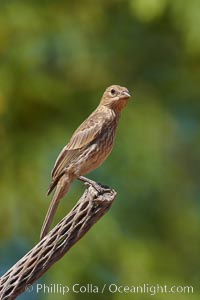
House finch, female.
Species: House finch, Carpodacus mexicanus
Location: Amado, Arizona
Image ID: 23087
Species: House finch, Carpodacus mexicanus
Location: Amado, Arizona
Image ID: 23087
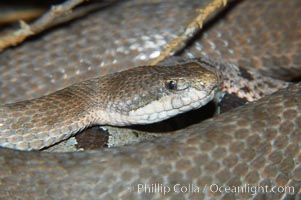
Twin-spotted rattlesnake, native to southern Arizona, is a small rattlesnake occupying talus slopes at high elevations and preying on lizards.
Species: Two-spotted rattlesnake, Crotalus pricei
Image ID: 12817
Species: Two-spotted rattlesnake, Crotalus pricei
Image ID: 12817
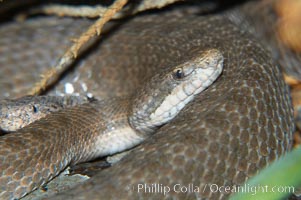
Twin-spotted rattlesnake, native to southern Arizona, is a small rattlesnake occupying talus slopes at high elevations and preying on lizards.
Species: Two-spotted rattlesnake, Crotalus pricei
Image ID: 12818
Species: Two-spotted rattlesnake, Crotalus pricei
Image ID: 12818
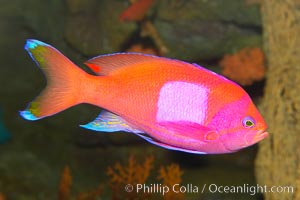
Square-spot fairy basslet, male coloration.
Species: Square-spot fairy basslet, Pseudanthias pleurotaenia
Image ID: 12862
Species: Square-spot fairy basslet, Pseudanthias pleurotaenia
Image ID: 12862
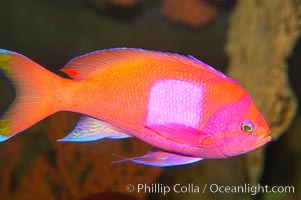
Square-spot fairy basslet, male coloration.
Species: Square-spot fairy basslet, Pseudanthias pleurotaenia
Image ID: 12863
Species: Square-spot fairy basslet, Pseudanthias pleurotaenia
Image ID: 12863
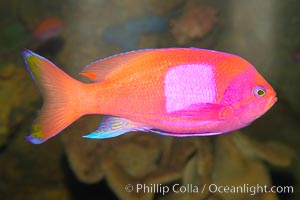
Square-spot fairy basslet, male coloration.
Species: Square-spot fairy basslet, Pseudanthias pleurotaenia
Image ID: 12864
Species: Square-spot fairy basslet, Pseudanthias pleurotaenia
Image ID: 12864
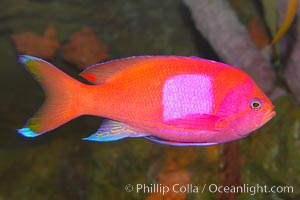
Square-spot fairy basslet, male coloration.
Species: Square-spot fairy basslet, Pseudanthias pleurotaenia
Image ID: 12865
Species: Square-spot fairy basslet, Pseudanthias pleurotaenia
Image ID: 12865
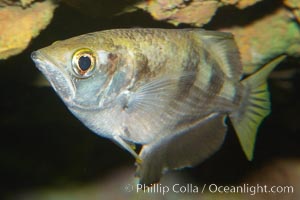
Banded archerfish. The banded archerfish is known for its ability to shoot down resting insects by spitting a jet of water. Large archerfishes can hit a target 2-3m away. Archerfishes have adaptations to the mouth which enable spitting. When a banded archerfish shoots a jet of water, it raises its tongue against the roof of the mouth forming a tube. The gill covers quickly close forcing water along the tube. This species mostly lives in mangrove and estuarine habitats throughout much of the Indo-Pacific.
Species: Banded archerfish, Toxotes jaculatrix
Image ID: 12902
Species: Banded archerfish, Toxotes jaculatrix
Image ID: 12902
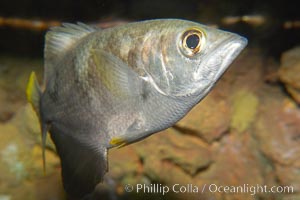
Banded archerfish. The banded archerfish is known for its ability to shoot down resting insects by spitting a jet of water. Large archerfishes can hit a target 2-3m away. Archerfishes have adaptations to the mouth which enable spitting. When a banded archerfish shoots a jet of water, it raises its tongue against the roof of the mouth forming a tube. The gill covers quickly close forcing water along the tube. This species mostly lives in mangrove and estuarine habitats throughout much of the Indo-Pacific.
Species: Banded archerfish, Toxotes jaculatrix
Image ID: 12903
Species: Banded archerfish, Toxotes jaculatrix
Image ID: 12903
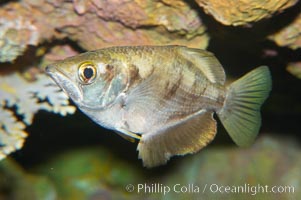
Banded archerfish. The banded archerfish is known for its ability to shoot down resting insects by spitting a jet of water. Large archerfishes can hit a target 2-3m away. Archerfishes have adaptations to the mouth which enable spitting. When a banded archerfish shoots a jet of water, it raises its tongue against the roof of the mouth forming a tube. The gill covers quickly close forcing water along the tube. This species mostly lives in mangrove and estuarine habitats throughout much of the Indo-Pacific.
Species: Banded archerfish, Toxotes jaculatrix
Image ID: 12904
Species: Banded archerfish, Toxotes jaculatrix
Image ID: 12904
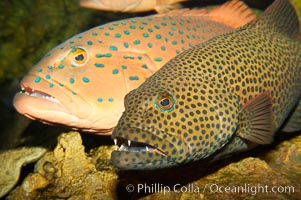
Squaretail coralgrouper (front) and spotted coralgrouper (rear).
Species: Squaretail coralgrouper, Plectropomus areolatus, Plectropomus maculatus
Image ID: 12914
Species: Squaretail coralgrouper, Plectropomus areolatus, Plectropomus maculatus
Image ID: 12914
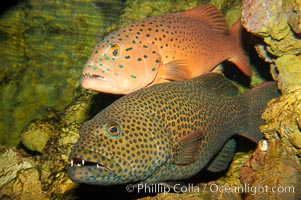
Squaretail coralgrouper (front) and spotted coralgrouper (rear).
Species: Squaretail coralgrouper, Plectropomus areolatus, Plectropomus maculatus
Image ID: 12915
Species: Squaretail coralgrouper, Plectropomus areolatus, Plectropomus maculatus
Image ID: 12915
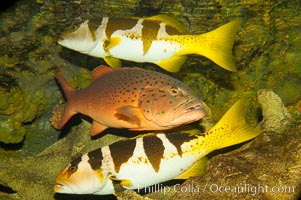
Spotted coralgrouper (center) and two saddleback coralgrouper (top, bottom).
Species: Spotted coralgrouper, Plectropomus laevis, Plectropomus maculatus
Image ID: 12918
Species: Spotted coralgrouper, Plectropomus laevis, Plectropomus maculatus
Image ID: 12918
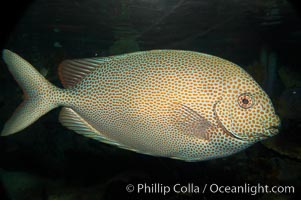
Goldspotted spinefoot rabbitfish.
Species: Goldspotted spinefoot rabbitfish, Siganus punctatus
Image ID: 12944
Species: Goldspotted spinefoot rabbitfish, Siganus punctatus
Image ID: 12944
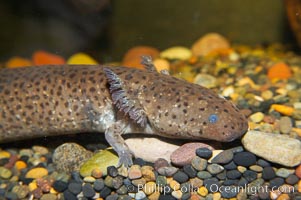
Lesser siren, a large amphibian with external gills, can also obtain oxygen by gulping air into its lungs, an adaptation that allows it to survive periods of drought. It is native to the southeastern United States.
Species: Lesser siren, Siren intermedia
Image ID: 13980
Species: Lesser siren, Siren intermedia
Image ID: 13980
